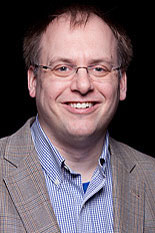
Perspectives on rare diseases - from a patient and a researcher
Feb 28th is the Rare Disease Day. What role will genomic technologies play in detection and cure of rare diseases?
The daughter of Ken Weiss and Anne Buchanan, the authors of The Mermaid’s Tale blog, wrote a post on her experience with hypokalemic periodic paralysis, a neuromuscular disease that the readers will find thought-provoking.
Despite being the product of two of the authors of this blog two people skeptical about just how many of the fruits of genetic testing that we’ve been promised will ever actually materialize I have been involved in several genetic studies over the years, hoping to identify the cause of my rare disease.
February 28 is Rare Disease Day (well, Feb 29 technically; the last day of February which is, every four years, a rare day itself!); the day on which those who have, or who advocate for those who have, a rare disease publicly discuss what it is like to live with an unusual illness, raise awareness about our particular set of challenges, and talk about solutions for them.
I have hypokalemic periodic paralysis, which is a neuromuscular disease; a channelopathy that manifests itself as episodes of low blood potassium in response to known triggers (such as sodium, carbohydrates, heat, and illness) that force potassium from the blood into muscle cells, where it remains trapped due to faulty ion channels. These hypokalemic episodes cause muscle weakness (ranging from mild to total muscular paralysis), heart arrhythmias, difficulty breathing or swallowing and nausea. The symptoms may last only briefly or muscle weakness may last for weeks, or months, or, in some cases, become permanent.
I first became ill, as is typical of HKPP, at puberty. It was around Christmas of my seventh grade year, and I remember thinking to myself that it would be the last Christmas that I would ever see. That thought, and the physical feelings that induced it, were unbelievably terrifying for a child. I had no idea what was happening; only that it was hard to breathe, hard to eat, hard to walk far, and that my heart skipped and flopped all throughout the day. All I knew was that it felt like something terrible was wrong.
Throughout my high school years I continued to suffer. I had numerous episodes of heart arrhythmia that lasted for many hours, that I now know should’ve been treated in the emergency department, and that made me feel as if I was going to die soon; it is unsettling for the usually steady, reliable metronome of the heart to suddenly beat chaotically. But bound within the privacy teenagers are known for, my parents struggled to make sense of my new phobic avoidance of exercise and other activities as I was reluctant to talk about what was happening in my body.
HKPP is a genetic disease and causal variants have been found in three different ion channel genes. Although my DNA has been tested, the cause of my particular variant of the disease has not yet been found. I want my mutation to be identified. Knowing it would likely not improve my treatment or daily life in any applicable way. I’m not sure it would even quell any real curiosity on my part, since, despite having the parents I have, it probably wouldn’t mean all that much to this non-scientist.
Continue reading here.
You may also read their following related post from Feb 27 of last year. It seems like
Genome sequencing for rare diseases
-——————————————–
On the other end of the spectrum are the dedicated researchers looking for diagnosis and cure for rare diseases. I had a few email discussions with Dr. Gholson Lyon of CSHL and am quite fascinated to hear about the research he is doing.

Before I go into specifics of his research, here is something I learned from his comments regarding the difficulties in working on rare diseases. Each disease affects only a small number of people, and that means a researcher needs to the have breadth of knowledge into different fields to work effectively. If he is an expert on only one are of the work (let’s say bioinformatics or large-scale sequencing or cell biology or biochemistry), it is very unlikely that he will find another expert dedicated to study another aspect of the same rare diseases. To a large extent, the same is true for researchers working on rare (non-model) organisms, and I see similar dedication among my collaborators working on electric fish.
Dr. Lyon identified a rare disease among a small group of residents in Ogden, Utah and he tetatively named it Ogden syndrome. The following interview covers his personal account of the discovery.
His full bio from his lab website is given below. You can find his publications here.
Gholson Lyons lab focuses on analyzing human genetic variation and its role in severe neuropsychiatric disorders and rare diseases, including Tourette syndrome, attention-deficit hyperactivity disorder (ADHD), obsessive compulsive disorder (OCD), intellectual disability, autism, and schizophrenia. By recruiting large groups of related individuals living in the same geographic location (e.g., Utah), Lyons lab can study the breadth and depth of genetic variants in a similar environmental background. Using the exomethe parts of the genome that code for proteinand whole-genome sequencing, his lab looks for mutations that segregate with syndromes in the various populations. A second focus of the Lyon lab is to study the mechanistic basis of a new rare disease that they described in 2011. This is the first human disease involving a defect in the amino-terminal acetylation of proteins, a common modification of eukaryotic proteins carried out by amino-terminal acetyltransferases (NATs). The team has been using several different cellular model systems to better understand the disease pathophysiology and the basic process of amino- terminal acetylation. This year, Lyon collaborated with a team of researchers from other universities and companies to use precision medicine to successfully treat a patient with severe OCD. His symptoms were treated with deep brain stimulation, and the team used whole-genome sequencing to try to understand the molecular basis of his disease. The patient experienced significant relief from his symptoms and his quality of life returned, suggesting that similar methods may hold tremendous promise in the future.